Table of Contents
UPSC Essay Paper 2023 Analysis
The UPSC Essay Paper is an important component that evaluates candidates’ knowledge as well as their ability to clearly and simply express concepts. This analysis explores the subtleties of this exam section, revealing trends, approaches, and ideas for future civil employees. The Union Public Service Commission (UPSC) conducted the IAS Mains 2023 Essay Paper on September 15, 2023. Check here UPSC Essay Paper 2023 detailed analysis below with proper model answers.
UPSC Essay Paper 2023 PDF
The Essay Paper of UPSC Mains 2023 is available in PDF format. The exam was successfully administered by UPSC at Forenoon on September 15, 2023. 9:00 AM – 12:00 PM, session. The UPSC Essay Paper is of 250 Marks. Candidates can check the UPSC Essay Paper 2023 PDF Link below
| Essay Paper | PDF Download Link |
|---|---|
| UPSC Essay Paper 2023 | Download Link |
UPSC Essay Paper 2023 Questions
The questions asked in the UPSC Essay paper 2023 have been mentioned below:
- Thinking is like a game, it does not begin unless there is an opposite team.
- Visionary decision-making happens at the intersection of intuition and logic.
- Not all who wander are lost
- Inspiration for creativity springs from the effort to look for the magical in the mundane
- Girls are weighed down by restrictions, boys with demands – two equally harmful disciplines
- Mathematics is the music of reason
- A society that has more justice is a society that needs less charity
- Education is what remains after one has forgotten what one has learned in the school
UPSC Essay Paper 2023 Section A
Check here 4 questions of a UPSC Essay Paper 2023 Section A.
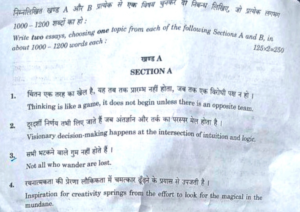
UPSC Essay Paper 2023 Section B
Check here 4 questions of a UPSC Essay Paper 2023 Section B.
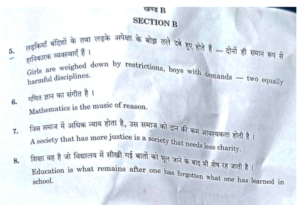
UPSC Essay Paper 2023 Detailed Discussion Question-wise
Check the Question-Wise detailed discussion on UPSC Essay Paper 2023 below:
1. Thinking is like a game, it does not begin unless there is an opposite team.
Approach :
- Thinking as a human nature.
- Features of thinking as a GAME – connecting thinking to a game.
- Game is based on competition.
- Various dimensions to connect
Thesis – Thinking (like a game) begins with a competition (it can be opposite views, adversary conditions/Challenges.
Philosophical basis : Hegels idea of dialectics.
Meaning/Context:
- Thinking in simple terms is a problem-solving activity.
- pondering or reflecting on something.
- Analysing and evaluating options
- Goal-directed behaviour.
- From choosing a dress to wear to solving a mathematical problem, all activities involve thinking.
Historical Examples:
- From Pre-historic to Contemporary times, adversities/ challenges/ necessities determined men’s journey as a hunterer gatherer to sedentary human. Examples:
- Ancient : To protect from animal attacks and other dangers , humans started to live in bands–thats the basis of community/society.
- Modern: Masses of Indian -sub-continent as a united against the oppressive policies of the British in the National Movement.
Examples from Different Dimensions
- Individual : In day to day life of individual, its the competition that drives our thinking from simple decisions like chosing a dress to major decisions like deciding on the careers.
- Societal : Ex: Social reforms in Hindu society were initiated through Arya Samaj due to the fear of westernisation and threat of conversions.
- Political: Fear of opposition from rival political parties in the Parliament checks the misuse of power by the incumbent government. (or) Presence of multiple political parties and their debates during the election campaigns ignites the thinking of the common man towards the major issues.
- Economical : Competition drives business, innovation and creativity in the Economy.
- Ex: Presence of multiple competitors in the telecom sector resulted in faster adoption of 4g technology in India.
- Governance : Competitive fedaralism by NITI Aayog giving best outputs,
- Environmental: Modern Environmentalism started due to the opposition to industrial revolution.
- International Relations : Countries’ goal to become superpower makes them to adher to the principles of peace.
- Other examples – Covid, globalization
Anti-Thesis : Thinking does not always require Competition to begin.
- Thinking can also happen by chance without any goal –For ex: it can happen through curiosity–Example: Newtons’ discovery of gravity, Human discovery of fire etc.
- Destructive thinking: Hitler
2. Visionary decision making happen at the intersection of intuition and logic
Approach:
- Decision making in everyday life – basis of human survival. E.g. Evolution of Humans from apes and role of decision making
- Role of Intuition in decision making (Navigating Ambiguity, Intuition is a source of creativity, as are innovation, Making social and interpersonal decisions, Risk assessment: Personal Values and Ethics)
- Logic as assistance in decision making (Identifying Relevant Information, Analyzing Options, Consistency, Problem Solving)
- Requirement of both intuition and logic for visionary decision.
- How to develop intuition and logic and balance them for visionary decision making.
- Conclusion
Thesis: Visionary decision possible at intersection.
Examples and Arguments:
-
- Innovation and creativity – Steve Jobs’ visionary choice to create the iPhone – result of his creative vision and intuition about what consumers needed.
- Financial innovations in the form of UPI – logic made it difficult as financial transactions were already happening, but intuitive ness about its adoption was the major factor for its success.
- Risk-taking: Elon Musk’s visionary choice to use SpaceX – intuition about the significance of extraterrestrial colonisation drove him to take the risk despite logic’s assertions to the contrary.
- Long-Term Perspective: Mahatma Gandhi had a brilliant idea to use nonviolent resistance – while logic might have suggested a more combative strategy, his gut feeling about the long-term advantages of nonviolence and unity resulted in a historic change.
- Human and societal factors: requires knowledge of societal dynamics, human behaviour, and values. E.g. A doctor may have logical medical data but also needs to consider the patient’s emotional state and unique circumstances.
- Transcending Conventions: Visionary choices go against accepted beliefs and norms. Nelson Mandela’s visionary choice to seek out forgiveness and reconciliation in South Africa after the end of apartheid.
More examples –
- Watson and Crick’s Discovery of DNA’s Structure.
- Alexander Fleming’s discovery of penicillin.
- Alfred Wegener’s intuition about continents drifting led to the plate tectonics theory and logic through dscoveries of fossils.
- Charles Darwin’s intuition about natural selection and the evolution of species led to his groundbreaking work, “On the Origin of Species.”
- Franklin D. Roosevelt – The New Deal: FDR’s intuition led him to understand the desperation and suffering caused by the Great Depression. The New Deal was a well-thought-out set of policies aimed at reviving the economy through public works projects, banking reforms, and social programs.
Anti Thesis: Why intuition and logic alone are not sufficient to achieve it.
Challenges and Pitfalls: Potential challenges of relying too heavily on intuition or logic in visionary decision making.
- Over Reliance on logic: Nokia’s Missed Smartphone Revolution – Over Reliance on logic can lead to a reluctance to embrace disruptive innovations. Fall of Kodak cameras.
- Over Reliance on intuition: Elizabeth Holmes, the founder of Theranos, had a vision to revolutionize blood testing. Holmes ignored red flags and critical feedback, ultimately undermining the company’s credibility. Also – 2008 economic crisis, NASA’s Space Shuttle Challenger disaster in 1986 was partially attributed to a decision made based on intuition
- Importance of self-awareness in decision-makers: Balancing intuition and logic is crucial in visionary decision-making. Self-awareness is the key to achieving this balance.
How to develop intuition and logic and balancing them for visionary decision making:
- Cultivate Intuition: Self-Reflection, Trust Your Gut, Embrace Creativity, Mindfulness and Meditation etc.
- Develop Logical Thinking: Analytical Exercises, Data Analysis, Scenario Planning
- Balancing Intuition and Logic: Collaborate, Feedback Loops, Continuous Learning
Conclusion: Visionary decision-making resulted from the harmonious interplay of intuition and logic. Intuition provided the overarching purpose and direction, while logic offered the means to translate those visionary goals into practical, achievable outcomes. – “Intuition alone can be a powerful guiding force, but logic is the tool that transforms vision into reality.”
3. Not all who wander are lost
Approach:
- Introduction with anecdote
- Arguments on essence of wandering – Integrating examples
- Counter viewpoints
- Pre-conclusion – Administrative dimension – Need of balancing wandering with clarity of purpose
- Conclusion
Introduction – Story of Siddhartha Gautama/ Columbus’ quest of exploring the unknown
Thesis
The topic reflects the idea that those who may appear lost or aimless may, in fact, be on a heroic quest. This perspective challenges preconceived notions and encourages us to look beyond appearances.
Essence of Wandering
-
- Leads to exploration – Societal level, Individual introspection (Linking this with introductory story of Gautam Buddha)
- Personal growth and self-discovery (Introspection leads to critical thinking, we understand why one behaves in a certain way). Example – Philosophy of Tao
- Quest for knowledge (Such deep wandering into the psyche of oneself and others may lead to gaining significant knowledge). Ex – Ferdinand Magellan discovery of the nature of Earth surface.
- Creativity and innovation (Insights and knowledge acquired through wandering may lead to creativity and innovation) Thomas Alva Edison
- Breaking free from conformity (Innovation/Creativity will challenge deep seated stereotypes and prejudices and in turn lead to breaking the conformity bias)
- Struggling for change/reform – Cuba cost effective health care and education despite being wandering with revolutions and system of government
Embracing uncertainty/Resisting the fear of unknown
It suggests that not having a fixed destination can be liberating, allowing us to adapt to the unexpected and be open to new experiences. This is particularly relevant in a rapidly changing world where flexibility and adaptability are highly valued.
Movements for social justice – LGBTQIA+, Environment, Women Empowerment, Caste equality movements.
Counter viewpoint
Survivorship bias
- Bias for those who do not get lost after wandering – but what about those who have / will lose after wandering?
Potential for Wasted Time:
- Wandering without a purpose or goal can lead to a significant amount of time and resources being spent without tangible results.
- In certain contexts, such as education or career planning, meandering aimlessly may result in missed opportunities or delayed achievements.
Risk of Disconnection
Individuals who prioritise aimless exploration over obligations to family, work, or community may find themselves isolated or struggling to meet their obligations.
Pre conclusion remarks – Linkage with Indian administration –
How wandering in the realm of bureaucratic rigidities led to the loss of purpose (welfare state). However, the decision to explore the path of “Digital world” has made governance citizen-centric. Balancing the wandering/exploration with clarity of purpose is paramount to achieve the dreams of AMRIT KAAL.
Conclusion
“Not all who wander are lost” invites us to navigate the complexities of life with an open heart and a curious mind, to embrace uncertainty and spontaneity, and to recognize that even those who appear to be wandering aimlessly may be on profound journeys of self-discovery and growth. It is an intellectual call to balance the pursuit of goals and the pursuit of wisdom, acknowledging that both are valuable and, at times, intertwined in the tapestry of human existence.
4. Inspiration for creativity springs from the effort to look for the magical in the mundane
Approach:
- Idea of creativity and basis for inspiration
- Creativity thrives when we uncover the extraordinary within the ordinary—finding magic in the mundane.
- This drives innovation across art, science, and technology, spurring personal growth, solving everyday problems, and shaping history.
- It serves as a catalyst for progress and enriches the human experience.
Anecdote for Introduction
Walking on the sand – taking a stroll on a beach, same sand – Silicon – semiconductors, Uranium – nuclear weapons/energy.
Thesis: Creativity is the spark that ignites our imagination, enabling us to see the extraordinary in the ordinary. What fuels this inexhaustible well of creativity?
It is the ability to see the extraordinary within the ordinary, to find the magical in the mundane.
It reminds us that the world is full of wonder waiting to be discovered, even in the most ordinary of circumstances.
Dimensions:
- Art and Aesthetics
Vincent van Gogh’s “Starry Night.”
Artists take commonplace objects, scenes, and emotions and elevate them to the realm of the extraordinary.
- Startups and small businesses
-
- Companies like Uber and Airbnb turned everyday tasks like transportation and lodging into magical, on-demand experiences, revolutionizing their respective sectors.
- The “Dabbawalas” of Mumbai, who efficiently deliver home-cooked lunches to workers across the city.
- Science and Innovation
-
- Think of Isaac Newton’s observation of an apple falling from a tree, which led to his groundbreaking insights into gravity.
- Consider Iphones ( Steve Jobs) , initially designed for communication but now integral to our lives, connecting us to an expansive digital world.
- Economy/Finance
- UPI Payments – brining financial revolution – from McDonalds to Street vendors
- Energy Security
- Renewable energy – like Solar – tapping the potential of Sun
-
- Biofuels – driving vehicles with cleaner, simple fuels
- Administrative Innovation: Bureaucrats using simple /mundane solutions for fixing societal issues.
-
- Armstrong Palme – People’s Road
- Operation Sulaimani – Prashant Nair – ‘’Compassionate Kozhikode’ – hunger and food security
- Problem Solving/ Challenges
Consider a chef in a bustling restaurant kitchen. They take ordinary ingredients—flour, water, and yeast—and transform them into the magical delight of freshly baked bread.
- On a personal level, seeking the magical in the mundane is a pathway to self-discovery and personal growth. The daily routines and tasks of life may seem routine, but they can be opportunities for mindfulness and reflection.
Antithesis /Alternate Perspective
- AI usage – killing creativity – only some will use AI for creativity but for the majority, creativity will get killed.
- Specific class of intellectuals – Gramsci’s Manufacturing Consent
- Circumstances for thinking – societal norms controlling mind – reducing innovation
Conclusion:
- Embracing the idea that inspiration can be found in everyday experiences is crucial for fostering innovation and ensuring a brighter, more imaginative future.
- As we navigate the complexities of our ever-changing world, let us remember that even the most ordinary of things can hold the spark of creativity and the potential for magic.
- The magic is not just out there; it’s within us, waiting to be uncovered in the world around us.
5. Girls are weighed down by restrictions, boys with demands – two equally harmful disciplines
Approach
- Introduction
- Breaking down the first part- Girls are weighed down by restrictions
- Breaking down the second part – Boys are weighed down with demands
- Why such a scenario
- Multidimensional Impact of these harmful disciplines – Family level, society, nation, Political, economical, etc.
- Are these two disciplines equally harmful?
- Countering these harmful disciplines
Introduction
- India, a nation heralded for its rich cultural heritage and a history spanning millennia, is also a place where gender disparities have endured for generations.
- The intricate web of expectations placed upon girls, often characterised by social, familial, and cultural restrictions, can inhibit their aspirations, education, and personal freedoms.
- Simultaneously, boys face the weight of societal demands that prescribe specific notions of masculinity, often emphasising stoicism, competitiveness, and emotional restraint
Girls are weighed down by restrictions
- Traditional gender roles and expectations may dictate that girls should prioritise domestic responsibilities over personal aspirations, conform to rigid standards of beauty and behaviour, and shy away from traditionally male-dominated fields.
- Examples:
- Emotional: Cannot express anger /aggressiveness–only love, empathy, care etc. are acceptable.
- Family and Marriage: Patriarchy; Restrictions on choosing life partner; child birth etc.
- Career: Restrictions on taking up professions like Mechanical Engineering , Combat role in Army etc. ( Gender ceiling ; Pink collared jobs etc.)
- Economy: Restrictions/ non-inclusion /no independence in major financial decisions.
- Consequences: These restrictions can stifle their ambitions, self-expression, and personal growth.
Boys with demands
- Boys often grapple with societal demands that pressure them to conform to notions of masculinity that may not align with their authentic selves.
- Examples:
- Emotional: Boys are not supposed to cry even in bitter conditions.
- Clothes: Colours and style as set up the society Ex: Pink is almost not acceptable
- Physical : Physical Strength
- Relationship: Not to show equality towards spouse
- Marriage: Taking Dowry
- Career: Towards Engineering, Army, Police etc.
- Economy: To bear the financial burden of the entire family
- Culture: To carry out the legacy of family
- Consequences: These demands may include suppressing emotions, pursuing aggressive behaviours, and demonstrating dominance. The pressure to meet these demands can lead to emotional repression, mental health issues, and a perpetuation of harmful stereotypes about masculinity.
Why? – Social norms, Perpetuation of stereotypes through social interactions, misinterpretation of religious texts, popular culture, cinema, etc.
Impact of these two harmful disciplines:
- Limiting Personal Growth
- Impeding social progress – Not conducive for national development
- Non inclusive society
Are the two disciplines equally harmful or not?
- Arguments in favour
-
-
- Reinforces Gender stereotypes – limits individual freedom and self expression
- Adversely impacts emotional well being .
- Perpetuates gender inequality and disturbs social peace–Men Vs. Women debate will continue.
- Limits life choices thereby repressing personal autonomy and Individual freedom
- Arguments against
-
- Biological limitations: Physical strength is a natural fact. Therefore, such limitations may not be harmful for certain segments.
-
- Cultural limitations: To preserve the culture to bind together the families through division of work and responsibilities.
- Societal Limitations: Society is not yet matured enough to accept breaking the gender roles and stereotypes.
- Infrastructural Limitations: Ex: Lack of Toilets and other necessary infrastructure for women is an issue to recruit women in combat roles in the army.
- More harmful to girls than boys as boys through demands at least get opportunities. However such opportunities are denied to girls due to restrictions.
Countering these harmful disciplines
Breaking barriers and building the nation – Countering the two harmful disciplines.
Conclusion:
- There are examples of women breaking their restrictions. Ex- Kiran Bedi
- Matrelinial societies build on breaking restrictions.
- Husbands also contributing in breaking limitations. Ex – division of house work.
6. Mathematics is the ‘music of reason’
- Approach
- Similarity between Maths and Music
- Linkage between Maths and Reason
- Why Maths is considered as the ‘Music of Reason’
- Way Ahead – Steps which can be taken to build Passion for Maths among young people
Similarity between Maths and Music
Similar to Music, to do mathematics is to engage in an act of
- discovery and conjecture,
- Discovery of Pythagorous
- intuition and inspiration;
- Ex Srinivisa Ramanujan contribution to pure mathematics, without any formal knowledge, which led to many discoveries.
- His last notebooks just before his death caused excitement among Mathmaticians
- Aryabhatta discovery of zero
- to be in a state of confusion— Do not know what your creation can lead to
- to have a break-through idea;
- Newton contributions in calculus, technology of telescope etc and how it helped in Modern Physics
- Recent research, in which Math models were used to gain new insight on how breast cancer metastasizes.
- to be frustrated as an artist;
- to be awed and overwhelmed by an almost painful beauty; to be alive, damn it.”
Linkage b/w Maths and Reason
- Mathematics is often described as a discipline rooted in pure reason. While it is influenced by empirical observations and practical applications, it is ultimately built on a foundation of abstract reasoning and logical deduction.
Reason why Mathematics is considered the ‘Music of Reason’
Requires Passion
Continuous pursuit of Knowledge
Can lead to collaborations for greater good
Inculcates logical Thinking and Reason
Results in creation which stand the test of time
-
- Provides Harmony in patterns – music of reason because it emphasized beauty of patterns, symmetry and harmony.
- Mathematical concepts underpin various technological advancement.
- Mathematical equation and concepts reveal the inherent order in the Universe.
- Transcends cultural and linguistic barriers → Universal language Understood by scientist, engineering and Finance
- International collaboration in the above field takes place.
- Cultivates Problem solving skills and logical thinking → Helps tackle real world problems.
- Cultivates Reason → Valuable in decision making
- Foundation of Science and Technology → Such as Physics, chemistry, biology
- Forms the basis of artificial intelligence, cryptography and data science etc.
- Basis of aesthetic work – Artists, architects draw inspiration from maths to create work
- Ancient times – Jantar Mantar,
- Historical significance → Role of Maths in growth from ancient times to present era.
- Add examples –
- Economic Significance → Role played by Maths in economics finance, resource allocation etc.
- Role in Space Technology → Indispensable in Space exploration providing trajectories, navigation and orbital mechanics
- for example calculus is used to determine the rate of speed required for the spaceship to successfully reach space from the Earth.
- India’s achievements in space exploration, especially Mars Orbiter Mission (Mangalyaan), Chandrayaan 3 mission which was celebrated for its cost-effectiveness and precision in trajectory calculations, demonstrating the role of mathematics in space endeavours.
- Educational and Skill development → Provides Individuals with analytical skills and problem solving → example of STEM (Science, Technology, Engineering and Mathematics) will help develop future professionals.
- Interdisciplinary Connections: Intersects with various other disciplines such as Computer Science, economics and Social Science. Thus, helps with Interdisciplinary research to provide Innovative solutions to the problems
Way Ahead – Change in culture to make Maths be seen as an artistic pursuit
- Talk about why Maths should be taken as an intellectually engaged, artistic pursuits.
- Take Maths as a a tool for collaboration (Similar to Music where artists collaborate example of collaboration in field of Space), persistence (similar to music work towards persistently finding new algorithms etc.), growth mindset (offer praise, nurturing the passion for Maths among student), Make students love Maths (stop the culture of hating Maths etc.)
7. A society that has more justice is a society that needs less charity
Approach
- Meaning/Context : A just society is one that strives to eliminate the root causes of inequality and suffering, thereby reducing the need for charitable assistance.
- Idea of Justice
- Historical dimension
- Interplay of Justice and Charity through multiple layers of society
- Significance of charity in today’s society
- Conclusion
Historical Dimension
- Primitive tribal societies are just societies (with equal distribution of wealth and opportunities) and thus have no concept of charity.
- Concept of charity started when social justice took a backseat with caste and gender divisions–charity in fact shows the inequalities in society (where rich are able to donate to poor).
Different Dimensions of Society
- Individual: Justice ensures equal access to basic amenities and opportunities–to become an empowered individual–and hence need no charity.
- Ex: Stephen Hawking’s disability did not let him to depend on charity.
- Community : Historically Disadvantaged sections of Indian society like SC/STs- were ensured with social justice through affirmative action in the constitution.
- Subnational level: Hilly and tribal regions are provided with special provisions in the constitution. (Fifth and Six Schedule )
- National level: Atmanirbhar Bharat/ Self-reliant India to become self-reliant in every sphere. We do not want to depend on the charity of developed nations – and also asserting cultural supremacy through the theme of Vasudhaiva Kutumbakam.
- Social Justice has no room for freebies in elections , farm loan waivers etc.
- World : Inclusion of African Union to G20–African nations need no charity but chances for opportunities for growth.
| Meaning |
|
Significance of Charity in Current Times
- Historical injustices have perpetuated inequalities in the society in the form of caste class, gender , religion etc.— constitution ensures social justice to these sections– but it will take a long time to correct these (even though progress has been significant) -hence charity (from individuals. Corporates and institutions) provide support to the desired sections of population to a certain extent.
- Global North vs Global South
- Impact of Climate Change – Common but Differentiated Responsibilities (CBDR)
- Corporate Social Responsibility (CSR) – balancing profits with the social needs.
Conclusion: The ultimate goal of society is to reduce the need for charity.
8. Education is what remains after one has forgotten what one has learned in the school
Approach:
- Meaning of Education and significance for humans.
- Role of learning: Learning is a process which results in a more or less permanent modification of behaviour as a result of practice or experience.
- Distinguish between education and schooling/learning → Only positive or desirable learning contributes to the process of education while negative or undesirable learning is not considered a part of education.
- The Importance of Lifelong Learning and how education inculcates this.
- Conclusion
Meaning/Context
- Education has different contextual meaning – the economist would see education as a commodity in which it is profitable for the community to invest. Sociologists would tell people that education is a socializing force, Education as a Spiritual Pursuit: According to the Upanishads, “Education is that whose end product is salvation”
- Nevertheless, education is there in all of the above and each one is linked to the process of education, yet it lies above all these.
- It is believed that education should prepare individuals for active participation in a democratic society.
Historical Dimension
- Education is derived from – “Educare”, which refers to “to bring up’ or “to nourish”.
- In India, the concept of education is traced back to the “Gurukula Parampara” which developed in ancient times.
Distinguish between education and schooling/learning
- Value system/ wisdom comes from experience while learning teaches academic knowledge and information. Example – only after seeing pain, death and suffering Siddhartha became Buddha.
- True education extends beyond memorization and tests, leaving a lasting imprint on an individual’s character, values, and ability to navigate the complexities of life. E.g. NEP fosters foundational learning away from rote learning.
- Education exposes individuals to diverse cultures, histories, and perspectives, nurturing cultural and social awareness. This understanding promotes tolerance, inclusivity, and the ability to thrive in a globalized world.
The success of renowned entrepreneurs like Steve Jobs and Bill Gates, who dropped out of college, highlights how the problem-solving skills and innovative thinking acquired in their educational journey laid the foundation for their groundbreaking careers.
The Importance of Lifelong Learning and how education inculcates this?
- Adaptation to Change: In a rapidly changing world.
- Personal Growth: Lifelong learning fosters personal growth and self-improvement.
- Career Advancement: Lifelong learners are often more competitive in the job market.
- Problem Solving: Lifelong learning enhances critical thinking and problem-solving abilities.
- Cognitive Health: Continuous learning helps maintain cognitive health and may delay cognitive decline associated with aging.
- Increased Confidence: Acquiring new knowledge and skills boosts self-confidence and self-esteem.
- Enhanced Communication: Lifelong learning can improve communication skills, including written and verbal communication.
- Social Engagement: Lifelong learners often engage in social activities related to their interests, fostering connections and a sense of belonging within communities of learners.
- Innovation and Creativity: Exposure to diverse ideas and experiences through lifelong learning can inspire innovation and creativity.
Way Forward: John Dewey’s 7 principles: Experiential Learning, Child-Centered Education, Learning by Doing, Integration of Subjects, Democratic Education, Continuous Learning, Problem-Centered Curriculum, Social Interaction.
Conclusion: Aristotle advocated for a balanced education that included the cultivation of moral virtues, intellectual virtues, and practical skills. In essence, education endures as a beacon that guides individuals throughout their lives, illuminating the path toward personal growth, societal progress, and the betterment of humanity as a whole.

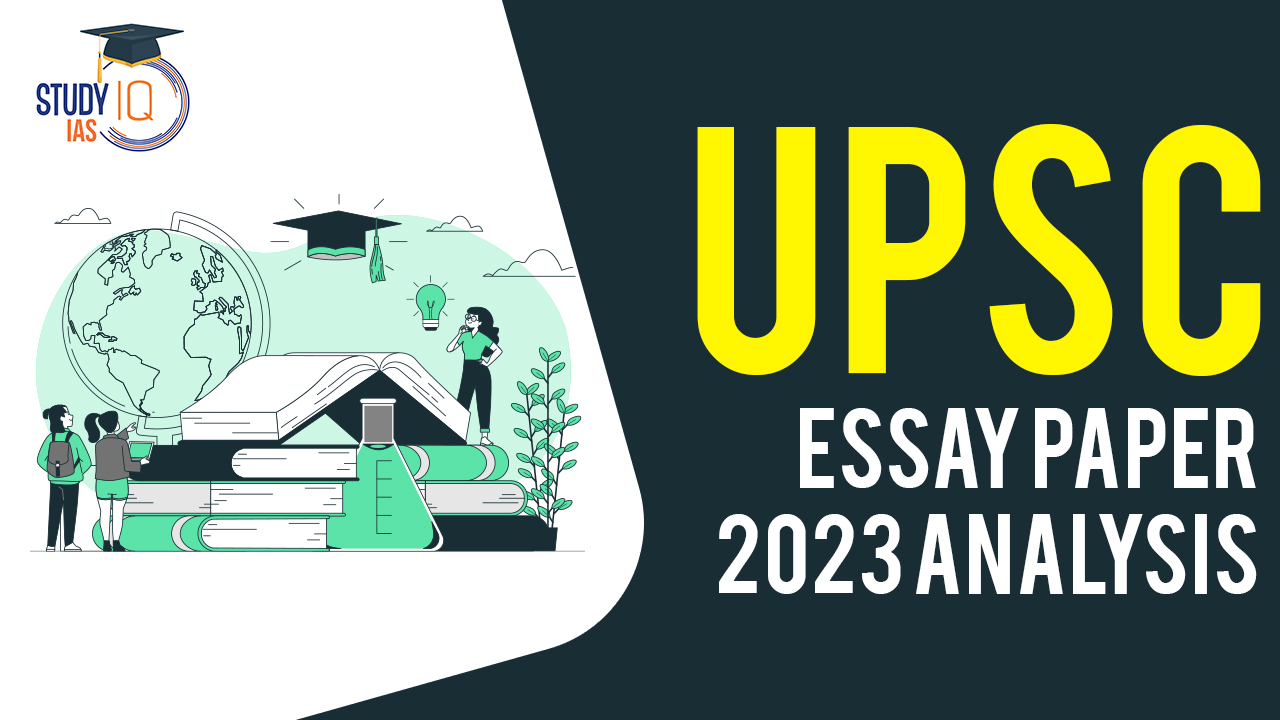
 NATO Countries List 2025, Members, Funct...
NATO Countries List 2025, Members, Funct...
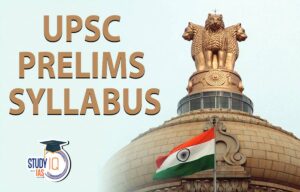 UPSC Prelims Syllabus 2025 PDF, Check Su...
UPSC Prelims Syllabus 2025 PDF, Check Su...
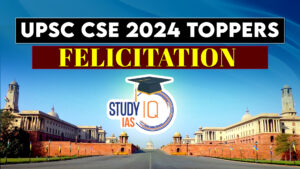 UPSC Toppers 2024 Felicitation Program b...
UPSC Toppers 2024 Felicitation Program b...





















